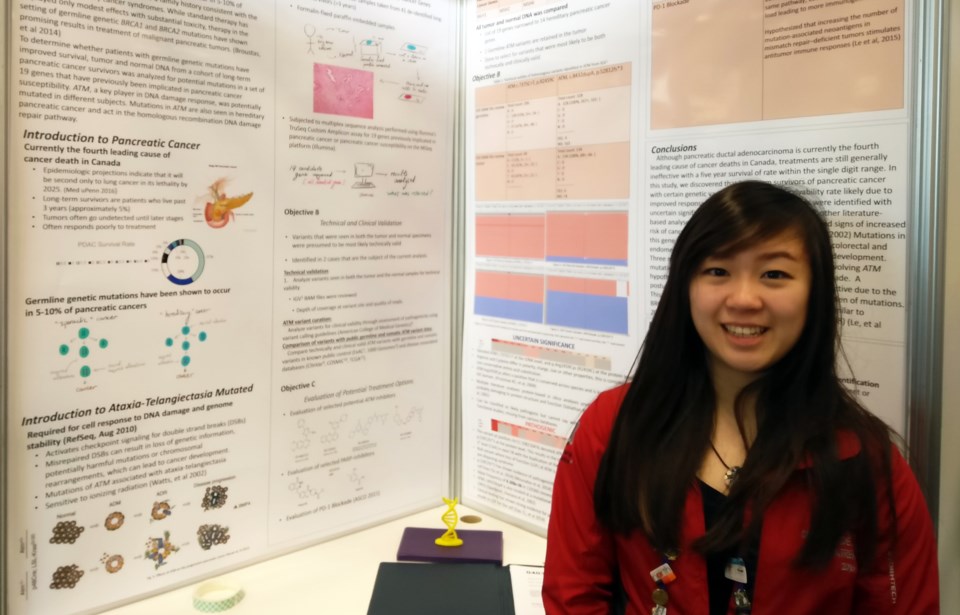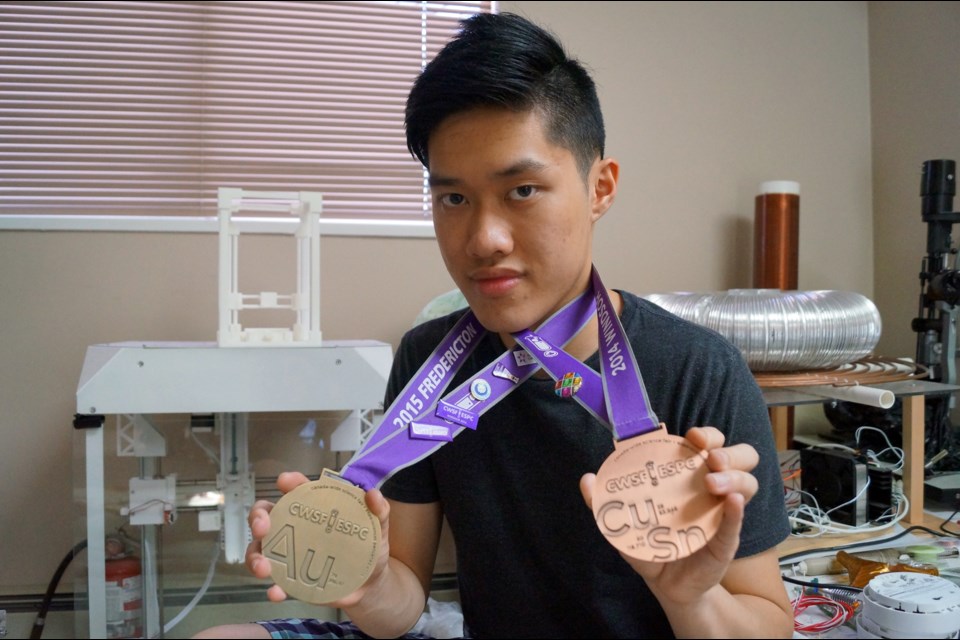On the top floor of his family’s townhouse is where Grade 12 Palmer secondary school student Ray Liu brainstorms his ideas, amidst a sea of electronic supplies and tools.
As impressive as his science fair projects have been over the past few years, is his equally impressive mastering of the tools that help craft those inventions and innovations.
“I never took electronics. I kind of grew past that,” said Liu, who is planning to attend the Canada-Wide Science Fair this month in Montreal, where he hopes to earn a third consecutive gold medal. He will be joined by one other Richmond student.
“It may be a bit messy. All my parents say is ‘don’t burn the house down,’” chuckled Liu, who does, in fact, keep a fire extinguisher next to his workbench, or rather his bed.
Liu has innovated a standard 3D printer to make it more energy efficient and potentially easier to print products.
His printer uses a composite material of solvent polymer and carbon fibre, which is stored as a liquid in a compartment but quickly hardens when it comes out of the nozzle. Standard 3D printers heat plastic and then spit out the product.
“My printing process doesn’t use any heat,” said Liu.
To boot, his products are stronger than normal 3D printers.
Liu had grown tired of printing too many things and overheating his original printer.
“Because I use the composite material, there are no heating elements,” he said.
One of the problems his new printer has is a lower resolution rate than regular printers. Liu said he’s examining evaporation rates of the solvent, which could allow him to reduce the nozzle size, thus increasing the resolution of printed products.
Liu has already won eight regional science fair competitions on top of his two national gold medals. Last year he built a laser-based non-lethal weapon.
Liu, who professes to be “pretty good with computers,” has scored perfect grades in physics and math classes. He’s off to engineering school at the University of B.C. this September.
Burnett secondary school teacher Sam Jessa helped students get to the Greater Vancouver Regional Science Fair earlier this year, where Liu won his all-expenses paid trip to the national fair in Montreal.
The regional science fair was a perfect opportunity to allow science-focused students to explore the new curriculum, noted Jessa.
“With the new curriculum changing, I had the kids do their own inquiry,” said Jessa.
So, whereas in the past a teacher may have directed students in a certain direction, Jessa allowed the students to choose their own projects so long as they demonstrated learning.
“Students picked a problem around the world or a topic that’s of interest. Then they developed questions around the subject and found an innovation that will solve the problem,” said Jessa.

One of Jessa’s former students at Burnett was Grade 11 student Vanessa Chan, who helped the BC Cancer Agency recognize genetic variants of long-term survivors of pancreatic cancer.
Chan also won a trip to the national fair, joining Liu as the only two Richmond students at the exclusive event.
“I was really surprised because all the projects around me were excellent,” said Chan, who was supervised by Jessa after being one of her students in Grade 8.
She was able to sequence hereditary pancreatic genes by analyzing tumour samples and comparing them to normal tissue.
In working on the project, Chan was able to demonstrate all of the critical fundamentals of senior biology classes, however she also went above and beyond what was expected of her — exactly what the new curriculum is designed to do.



